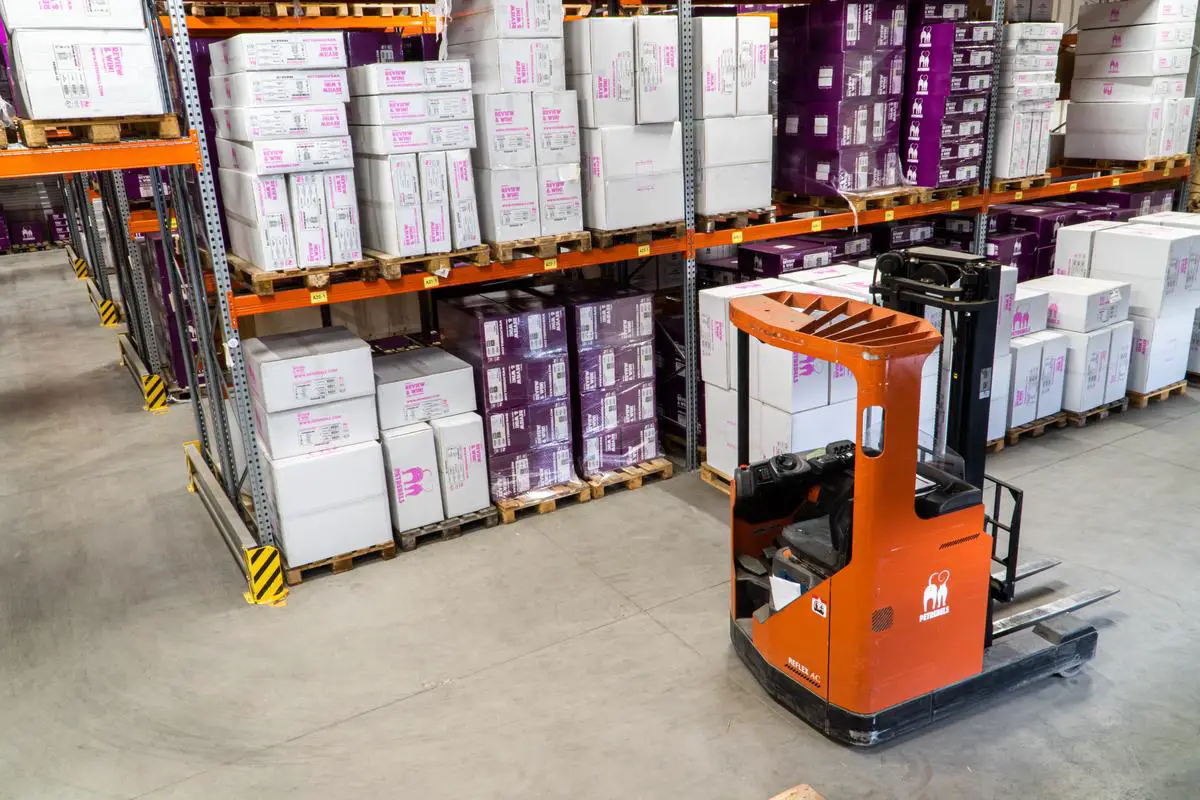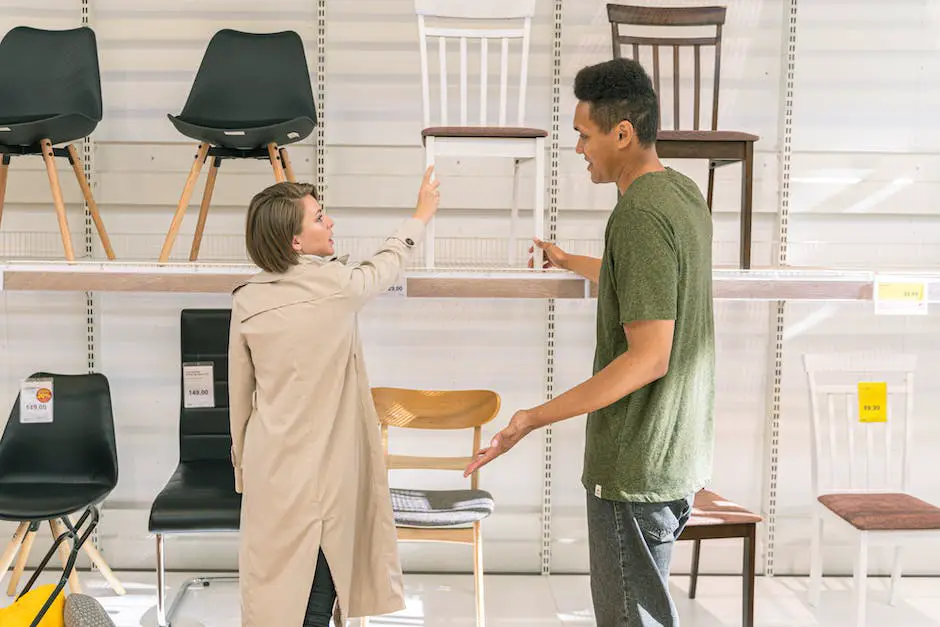With an intriguing legacy wrapped in ingenuity and an enduring commitment to making everyday life better for the many people, IKEA stands as a remarkable figure in the world of retail. The Swedish multinational group, IKEA, has not only redefined the furniture industry but also transformed how people shop for their homes. It’s a story of a small town business that sprouted in the Swedish countryside, steadily becoming a global household name. Just as one marvels at the transformation from an IKEA flat-pack to a functional piece of furniture; the company’s evolution, product range and unique customer experience offers a similar sense of amazement and satisfaction.
History and Brand Values of IKEA
Genesis of IKEA
IKEA, an acronym for Ingvar Kamprad Elmtaryd Agunnaryd, was founded by Ingvar Kamprad in 1943 in Sweden. Kamprad began his entrepreneurial journey by selling goods like pens, wallets, and picture frames. However, the business that started out as a mail-order sales business eventually evolved into selling furniture. By 1951, the company had completely devoted itself to furniture manufacturing and sales.
IKEA’s Evolution and Development
IKEA’s first showroom, opened in 1953 in Almhult, Sweden, was a game-changer for the company. It was the moment when customers could touch and feel the products before purchasing, thereby revolutionizing furniture shopping. The company introduced the concept of flat-pack furniture in 1956, which further bolstered its unique selling proposition. This innovation considerably reduced the cost of transporting and delivering the furniture to customers, thereby making it affordable for a larger consumer base.
The company left Swedish shores and opened its first store outside the nation in Oslo, Norway, in 1963. Since then, IKEA has grown into a global furniture-selling giant, with more than 400 stores spread across 50 countries.
Brand Values at IKEA
Affordability
IKEA is synonymous with affordability. It believes that good design should be accessible and affordable to as many people as possible. This is accomplished through cost-effective processes, such as flat-pack distribution, and concentrating on simple designs that are easy to manufacture.
Functionality
IKEA places a strong emphasis on the functionality of its products. Each piece of furniture or accessory aims to maximize the usage while fitting comfortably in the customer’s living space. This is reflected in the company’s space-saving designs and multipurpose pieces.
Sustainability
Sustainability is another value that IKEA takes seriously. The company aims to reduce its impact on the environment by using more renewable and recycled materials and striving to become climate positive by 2030. IKEA also encourages its customers to live a more sustainable life at home through its eco-friendly product range.
Design
IKEA believes in democratic design, meaning that every product should be designed with the perfect combination of form, function, quality, sustainability, and a low price. IKEA places importance on simplicity and minimalism, using Scandinavian designs hinged on clean lines, brightness, and utility.
Wrapping It Up
IKEA, known worldwide for its affordable and functional design concept, has effectively built an incredible global furniture phenomenon. Their unwavering commitment to sustainability and their groundbreaking approach to convenience home solutions, such as flat-pack furniture, always keeps them a step ahead. This approach has helped IKEA produce unique solutions which continually captivate consumers all over the world.

IKEA’s Product Range and Design Philosophy
Exploring IKEA’s Diverse Product Portfolio
The product range at IKEA is extremely diverse, designed to cater to every imaginable need in a home. Their furniture offerings include everything from sofas, tables, chairs to beds, all designed with an acute attention to intricate Scandinavian detailing combined with simplicity.
Apart from furniture, IKEA’s product portfolio extends even further including innovative lighting systems, a range of kitchen appliances, and an assorted collection of home accessories. From sleek table lamps to energy-saving LED lights, IKEA’s lighting solutions are designed with both style and practicality in mind. Their kitchen gadgets, from multifunctional ovens and refrigerators to mixers and toasters, are a true reflection of the brand’s commitment to marrying convenience with functionality.
IKEA’s commitment to providing complete home solutions is seen in their wide variety of accessories for decoration and utility alike. This may include anything from decorative cushions and rugs for coziness to stylish storage solutions, artistic wall hangings, mirrors and everyday kitchenware.
Design Philosophy: Minimalism, Functionality, and Democratic Design
IKEA’s design philosophy revolves around three key principles – minimalism, functionality, and democratic design.
Minimalism is reflected in IKEA’s design ethos, as products typically exhibit clean lines, neutral colors, and an unmistakable Scandinavian simplicity. This focus creates timeless pieces that integrate seamlessly with a wide variety of home decors.
Functionality, another central tenet of IKEA’s philosophy, ensures that their products are not just aesthetically pleasing but also highly practical. IKEA designs every product to solve a specific problem or meet a particular need, prioritizing utility and efficiency.
The concept of democratic design is deeply woven into IKEA’s identity. This involves making well-designed, functional goods readily available at affordable prices. IKEA believes in creating products that many people can access and benefit from, not just a select few.
Flat-Pack Strategy: Affordability and Convenience
One of the defining characteristics of IKEA’s product strategy is its signature flat-pack design. This unique packaging method involves the company delivering items in flat parts for consumers to assemble at home.
By opting for this flat-pack approach, IKEA achieves several objectives. Firstly, it lowers the overall cost of transportation and storage, as more products can fit in a single shipment. This in turn contributes to IKEA’s broader commitment to affordability, as savings can be passed on to the consumer directly.
Additionally, the flat-pack strategy champions convenience. Even though customers have to assemble the products themselves, they can easily transport the flat packages in a regular vehicle, eliminating the necessity for special delivery arrangements. This convenience is augmented with user-friendly and comprehensive instruction manuals that accompany each product.
Wrapping up, the extensive product line and design ethos of IKEA reflect their staunch commitment to delivering stylish, functional, top-quality products that customers can afford and easily put together at home. They stand as evidence that top-notch design doesn’t need to be accompanied by a steep price and can indeed be made accessible to all.

Photo by petrebels on Unsplash
Customer Experience at IKEA
A Brief Look at IKEA’s Engaging Shopping Journey
IKEA, the esteemed Swedish home goods retailer, gives customers an engaging shopping journey that extends from physical stores to the online platform. The company is praised for its cost-effective, flat-packed furniture combined with a unique retail approach where the layout of each store is meticulously designed to resemble an actual home environment with sample rooms that serve as inspiration for customers.
In-Store Experience: A Snapshot
Specifically, when shopping in-store, customers are guided through a pre-determined pathway that weaves through the entire store. Thus, unlike other retail stores where the customer may directly proceed to the desired section, IKEA’s store layout encourages the customer to survey and experience all the products offered. Various departments are displayed in an orderly manner, from living room furniture, bedroom decor, kitchenware, children’s items, to outdoor furnishing, each roped into Ikea’s signature style of minimalistic yet functional design.
The Assembly of IKEA Products
The assembly of IKEA products is a distinct part of the IKEA experience. The notion of self-assembly aims to bring down costs and therefore make quality design and materials accessible to a wider customer base. Each furniture item comes in a flat-packed box along with a detailed instruction manual. The manual provides a step-by-step guide toward assembling the purchased item at home, a feature that encourages a more hands-on experience.
Home Delivery and Assembly Assistance
Notably, IKEA even offers home delivery services for those who prefer not to lug their purchases home. Depending on the location, the company may also provide assembly services at an additional cost to those who prefer a more convenience-based approach.
Online Shopping: Navigating the Virtual IKEA
IKEA’s online shopping experience mirrors its conscious design and customer-focused approach. Its e-commerce platform enables customers to virtually explore its vast product line, with various categories and filters that make navigation easier. Shoppers can also access digital versions of their assembly guides and inspect product specifications in detail before making a purchase.
IKEA’s online portal also includes a feature for planning and visualizing changes in specific rooms of their homes. For instance, the PAX planning tool allows users to visualize their dream wardrobe, making online shopping an immersive experience.
Customer-friendly Policies
IKEA is well-regarded for its comprehensive customer-friendly policies. It provides a 365-day return policy, wherein customers can return any product within a year of the purchase date, as long as the item is in resalable condition and with a proof of purchase.
Besides, IKEA’s sustainability initiative, the “Buy Back and Resell” program, offers customers the opportunity to sell back their used IKEA furniture in exchange for store credit. This promotes a culture of recycling and reuse, reinforcing IKEA’s commitment to sustainability while benefiting its customer base.
In conclusion
IKEA’s blend of unique store layouts, DIY assembly, online shopping experience, and accommodating policies make the brand stand apart significantly. The focus on customer experience and satisfaction is palpable, whether you’re walking through one of their expansive stores or browsing through their extensive product range online.

Peering into the world of IKEA, it becomes evident why the brand holds such a significant place in our homes and hearts. Balancing functionality, affordability, and design while ensuring sustainability underlines the unique value proposition that IKEA has to offer. Be it a beautiful piece of minimalist furniture brightening up a living room, a well-designed kitchen appliance serving up warm family dinners, or the fulfilling experience of assembling furniture with loved ones; IKEA brings a piece of functional elegance into our everyday lives. This unequaled combination of ideals is what fuels IKEA’s enduring appeal and growth. Embodying its commitment to creating a better everyday life for many people, IKEA continues to inspire, innovate and evolve – much like assembling an IKEA flat-pack, it’s a journey of discovery and fulfillment.


